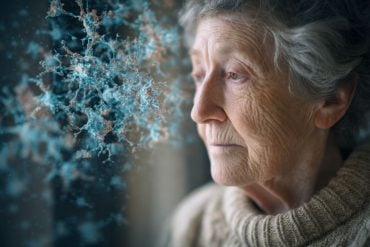Summary: A new study aims to examine the role of napping in brain development among infants and preschoolers. By tracking changes in the hippocampus, the research aims to prove how critical naps are for memory retention and brain growth in young children.
These longitudinal studies could set new standards for nap policies in educational settings, benefiting both neurotypical and neurodiverse children. Insights from this research will provide valuable guidelines for parents and educators on the importance of napping in early childhood.
Key Facts:
- Focus on the Hippocampus: The studies investigate the hippocampus’s role during nap transitions, highlighting its significance in short-term memory and overall brain development.
- Longitudinal Approach: Unlike previous cross-sectional studies, these projects will observe the same children over time to better understand the developmental milestones associated with napping.
- Practical Applications: Findings from the studies are expected to influence nap policies in preschool environments and offer actionable insights for parents of young children.
Source: UMass
A University of Massachusetts Amherst sleep scientist, funded with $6.7 million in grants from the National Institutes of Health (NIH), has launched two unprecedented studies that will track over time the brain development of infants and preschoolers to confirm the role of napping in early life and to identify the bioregulatory mechanisms involved.
Rebecca Spencer, a professor of psychological and brain sciences who is well-known for her groundbreaking research into napping, is testing her theories about what’s happening in the hippocampus–the short-term memory area of the brain–as babies and young children undergo nap transitions.

This new research is expected to become the gold standard of scientific evidence that emphasizes the importance of healthy sleep for young children as their brains develop.
The findings will help inform nap policies for preschool and pre-kindergarten and be useful to teachers and parents of both neurotypical and neurodiverse children.
“The work we’ve been doing has always pointed to this interaction of sleep and brain development,” says Spencer, who carries out research in her Somneurolab at UMass Amherst.
“We think that kids get ready to transition out of naps when the brain is big enough to hold all the information of the day until night-time sleep.”
The study involving preschoolers is a collaboration between Spencer at UMass Amherst; Tracy Riggins, a developmental psychologist specializing in memory development at the University of Maryland; and Gregory Hancock, a UMD professor of human development and quantitative methodology.
Previous research by Spencer and Riggins showed differences in the hippocampus of kids who nap compared to those who have transitioned out of naps.
“So far, we’ve used cross-sectional approaches,” says Spencer, referring to research that analyzes data at one point in time, as opposed to longitudinal studies that involve repeated observation over time.
“We really need to show longitudinally within a child that the point when they transition out of naps is predicted by a transition in the development of their hippocampus.”
The hippocampus is the short-term location for memories before they move to the cortex for long-term storage. Naps allow children with an immature hippocampus to process memories.
Young children give up their afternoon nap, not based on their age, but their brain development, Spencer hypothesizes.
“Naps are beneficial to everybody. Naps protect memory for everybody, no matter what age. Kids who are habitual nappers really need the nap. If they don’t nap, they get catastrophic forgetting.
“That’s the difference between habitual and non-habitual nappers – not how good is the nap, but how bad is staying awake,” Spencer explains.
Adds Riggins, “In the end, being able to tell parents that those little deviations from routine that keep their children from napping might not have these huge implications for a neurotypical child in the long run would be great.
“And, the more we know about how the brain works in a typically developing child during this nap transition, the more we will be able to know about where we could possibly intervene to help neurodiverse children–like children with autism and ADHD, whose sleep patterns tend to be disrupted–since we will have some sort of scientific basis.”
The research team is recruiting 180 children, ages 3 to 5 years. The researchers will track their brain development, memory performance and nap status over the course of one year at three checkpoints.
During the first and second sessions, the children will wear activity-tracking watches and EEG equipment to record naps and overnight sleep. They will also play memory games before and after naps. The children will undergo an MRI brain scan during the third session.
Monica and David Dumlao, of Chicopee, Mass., signed up their son Miles, 4, for the preschool study after watching the Netflix documentary series, “Babies,” which featured Spencer in the episode about sleep.
“We like learning about the neuroscience behind brain development,” Monica Dumlao said at a recent study session in Spencer’s lab.
“We thought this was a good opportunity to contribute to the science about the importance of naps.”
In the three-part infant study on nap transitions and memory, Spencer is studying the period before and after babies transition from two naps–one in the morning and one in the afternoon–to one, richer afternoon nap.
She is recruiting 140 infants 7 to 9 months old. The babies will play a memory game before and after their naps. Their brain activity will be recorded during their naps using a noninvasive electrode cap. The sessions will take place at 9, 12 and 15 months.
“We think as they are getting ready to drop the morning nap, staying awake in that morning interval will be less and less damaging to their memory,” Spencer says.
“But we don’t think that’s going to happen with the afternoon nap at this age. We think the afternoon nap stays superimportant.”
Parents interested in participating in the preschool sleep study are invited to fill out a screening form here; the screening form for the infant nap study is available here.
About this sleep, memory, and neurodevelopment research news
Author: Patty Shillington
Source: UMass
Contact: Patty Shillington – UMass
Image: The image is credited to Neuroscience News






